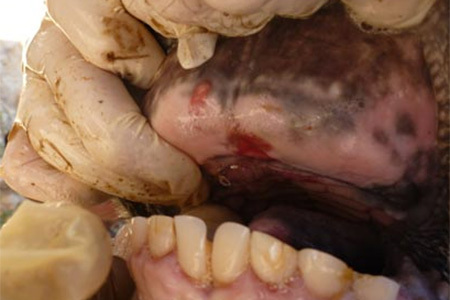Biosecurity threat edges closer
Laura Williams
07 July 2022, 9:10 PM
 Cases of Foot and Mouth Disease were detected in Bali on 5 July.
Cases of Foot and Mouth Disease were detected in Bali on 5 July.Australia’s biosecurity has come under fire after a series of high risks that threaten to have a direct impact on the Western Plains and its economy.
Following last week’s outbreak of the Varroa mite (which infects bees) which was cause for the destruction of hives located in Trangie, the recent detection of the destructive mite in Narrabri is evidence that the current eradication efforts haven’t slowed its spread.
With the deadly Foot and Mouth Disease (FMD) being detected in Bali, peak bodies are concerned that the response could echo that of Varroa, potentially creating an $80 billion problem for the country.
NSW Farmers Biosecurity Chair Ian McColl said he has little faith in biosecurity screening protocols at Australian borders.
“We have been warning Australia is highly exposed to biosecurity incursions and we’re seeing that play out right now,” Mr McColl said.
While FMD became a threat when it was detected in Indonesia last month, the recent confirmation of the disease in Bali means that the risk of reaching Australian shores is only growing.
Although the recent NSW Budget saw over $160 million invested in biosecurity measures, without rapid implementation of new measures, the funds may be redundant.

Blister on tongue from Foot & Mouth disease. PHOTO Agriculture Victoria.
Mr McColl said the detection of FMD and lumpy skin disease could rip and enormous hole in the economy.
FMD is a contagious viral disease of cattle, sheep, goats and pigs with severe consequences for animal health and trade.
“If we get a detection of foot and mouth disease it will cost Australia $80 billion and take years to recover from,” Mr McColl said.
“To put that into perspective, that’s roughly the size of the entire JobKeeper program, and it’s something we can prevent if we get the systems right.”

Foot blister. PHOTO Agriculture Victoria
Coonamble District Vet Dr Jillian Kelly said that regularly monitoring animals is important for farmers, despite there being no detection in Australia.
“Indonesia is our nearest neighbour, and a popular tourist destination for Australians, which presents a potential pathway of transmission of FMD virus,” Dr Kelly said.
At the time of reporting, Australia is FMD free and is exercising increased vigilance across all flights arriving from Indonesia, including Bali.
Graziers should look for animals appearing depressed, lameness, and drooling amongst other symptoms.

Mouth blister.
The time between an animal becoming infected with FMD and showing signs of the disease can vary between 2 to 14 days, and can infect multiple animals in a herd.
If you suspect FMD in any animal in NSW, report it immediately to the Emergency Animal Disease Watch Hotline, 1800 675 888
NSW DPI asks all beekeepers and property owners with hives on their land within the 50km emergency zone of Narrabri to report their hives.
